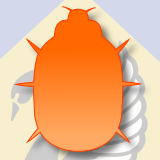

|
|

|
help5501This forum is provided to promote discussion amongst students enrolled in CITS5501 . If posting a question, it's suggested you check first whether your question is answered in the unit Frequently Asked Questions (FAQ) list, and use the search box (on the right) to see if an answer to your question has already been posted.Please consider offering answers and suggestions to help other students! And if you fix a problem by following a suggestion here, it would be great if other interested students could see a short "Great, fixed it!" followup message. Note that any posts must comply with the UWA Code of Conduct and the UWA Academic Conduct Policy. That means you should (a) treat everyone with respect and courtesy, and (b) not post your solutions to an assessment that's in progress. If asking a programming question, it's recommended you read How do I ask a good question? If reporting or troubleshooting a bug in software used in the unit, it's recommend you read How to report bugs effectively. |